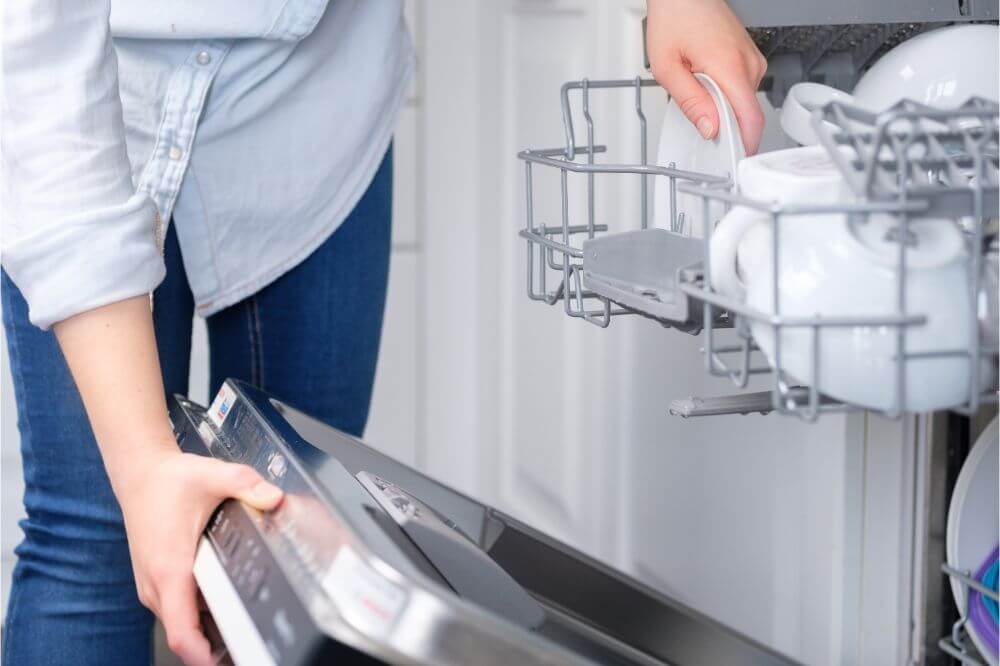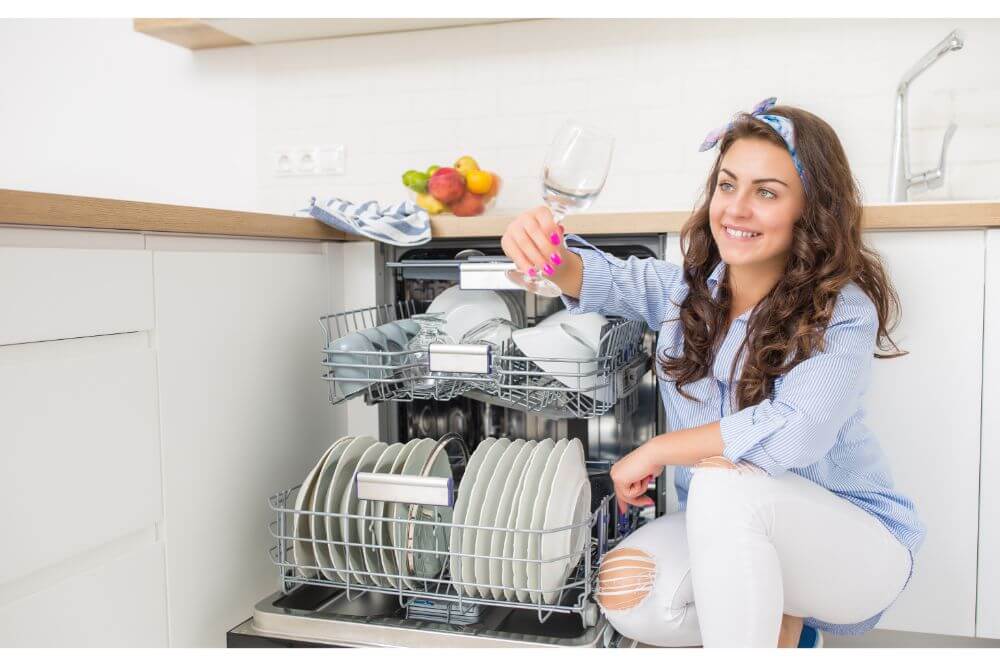If you are planning on buying a new dishwasher, you might not know what to look for. Obviously, how much money you spend on the unit in question is going to make a difference. How much money you spend will determine all of the features that you get.
Of course, spending $2000 on a dishwasher is going to get you a lot more than spending $500. With that being said, what do you actually get? This is exactly what we are here to determine today.
Let’s talk about what features to look for in a dishwasher. As you will see below, there are 12 important aspects for you to pay attention to.
If you pay attention to all of the following aspects, you should have no problems purchasing the best dishwasher to suit your needs.
What Features to Look for in a Dishwasher
1. Type of Dishwasher
One thing that you need to pay attention to here is the type of dishwasher that you want to get. Generally speaking, dishwashers are classified in four different categories.
You have high-end commercial dishwashers that are designed for commercial spaces such as restaurants and hotels. More than likely, you are not going to need one of these.
Second, you have your standard built-in dishwasher that gets built into a kitchen. These are usually the costliest of the dishwashers used in home settings. If you want the best dishwasher with the most features, this is usually what you want to go for.
You then have portable dishwashers, which are ideal for smaller spaces as they can be stored in closets. These are generally not all that expensive, but also pretty small and usually don’t have that many features.
The other option you have is a countertop dishwasher. These are generally very small and can only fit a few place settings. They are also usually very affordable. However of course, they’re only big enough for one or two people at most.
2. Overall Size & Capacity
Somewhat related to the above point, you do also want to pay attention to the size and capacity of the unit in question.
In terms of the outer dimensions, you want something that is actually going to fit into your kitchen. If you only have 18 inches of space to fit a dishwasher, you obviously can get a 24-inch unit. Space does matter.
That said, you also want to pay attention to the internal capacity of the unit in question. For instance, a 24-inch model is generally going to be big enough for a family of four to six people.
A 24-inch model will usually be able to hold anywhere from 12 to 16 place settings. On the other hand, a much smaller 18-inch model is usually ideal for two or three people, maybe four at most.
These can usually hold 8 to 10 place settings. It all depends on how many dishes you have that need washing on a regular basis.
3. Washing Racks & Organizational Features
Also somewhat related to the above point, you want to pay attention to the racks that your dishwasher comes with. Cheaper machines will usually come with two racks, including a bottom and a top. These usually won’t be adjustable.
However, if you spend a bit extra, you might be able to find a machine that has three racks. Moreover, with a slightly higher cost, you will usually also get other organizational features. Some of them will feature racks that can be adjusted for height.
This is convenient if you have extremely large items that you need to fit. Some of them will also have fold-down tines, which also allow you to fit bulky items with ease.
4. The Spray Arms
You also want to pay attention to the spray arms that the dishwasher in question has. Some come with a single spray arm, whereas others come with dual spray arms. Many also come with a spray arm located in the top of the machine whereas some do not.
When purchasing a dishwasher, read the description in terms of these spray arms. Some have special high-pressure jets, whereas others do not. It really depends on what your exact needs are.
5. Filters & Food Disposal
Any and every good dishwasher is going to come with a filter. However, one of the biggest features to look out for is a food disposal system. Lower-end dishwashers usually won’t come with a food disposal system, but mid-range and higher-end units will.
These generally come in the form of one or various blades that pulverize food into small bits. This is very useful because it helps you skip the prewash phase and it also helps prevent clogging from occurring.

6. Water Temperature
You also want to pay attention to the specific water temperature that the dishwasher in question can achieve. Some wash dishes at 150 degrees Fahrenheit, whereas others go as high as 180 degrees or more.
Generally speaking, the hotter the water can get, the better your dishes will be washed. Having very hot water is also useful if your water is hard water. Hot water has the ability to dissolve those calcium and magnesium buildups. This can then help prevent hard water buildup from occurring in your machine.
7. Wash Cycle Options
One of the most important things to look for when purchasing a dishwasher is the number of wash cycles that it comes with. Your standard dishwasher is going to come with a standard wash cycle, a heavy wash cycle, and a short wash cycle.
More advanced units will also come with rinse and hold options, sensor wash options, sanitize options, half load options, and eco-friendly wash options.
One of the biggest things in our opinion is the sensor wash. Dishwashers with sensors will see how dirty your dishes are and will automatically adjust their output. This allows for clean dishes without wasting water or energy.
8. Drying Your Dishes
We do recommend looking for a dishwasher that comes with a drying function. Now, not all dishwashers will dry your dishes. However, we do recommend getting one that does. Even better is if the dishwasher in question has an automatic door release function.
This will cause the door to automatically open once a washing cycle is done. This will therefore help let moisture out and help with air circulation. This in turn will help your dishes dry faster and without water spots.
9. The Materials – Interior & Exterior
The next thing to keep an eye out for is what the dishwasher in question is actually made out of. Cheaper dishwashers will be made out of plastic, and this goes for both the interior and the exterior.
Mid-range options will usually have a stainless steel exterior, but a plastic interior. Higher-end dishwashers will usually have a stainless steel interior and exterior.
Simply put, the less plastic and the more stainless steel you have on your machine, the better it will be able to deal with punishment. Stainless steel is always superior to plastic, although obviously more expensive too.
10. The Control Panel
Although control panels are pretty standard, there are ones that have a digital display, whereas other have mechanical buttons. In the grand scheme of things, this is not all that important although it may make a difference to you. That said, as long as the unit in question is user-friendly and easy to control, you should be fine.
11. Energy Efficiency
One of the most important things for you to pay attention to here is how energy efficient the dishwasher in question is. Generally speaking, you want your dishwasher to use less than 270 kilowatt hours of electricity per year.
In the grand scheme of things, if you have an Energy Star certified dishwasher, then you are on the right track. Remember that not using much energy will allow you to save a lot of money in the long run.
12. Noise Level
The other thing that you want to pay attention to here is how loud the dishwasher in question is. Of course, the less noise it makes the better. For the record, a dishwasher that can produce 40 decibels or less is very quiet. One that produces anywhere from 45 to 55 decibels is somewhat silent. Anything over 60 decibels, however, is fairly loud.
Conclusion
Now that you know exactly what to look for when purchasing a dishwasher, you can buy the one that works best for you. Remember that you want to spend enough money to get the features that you need for the best results.
However, on the other side of the equation, you don’t want to pay unnecessary amounts of money for features that you’re never going to use. It really all comes down to your personal needs and personal preferences.

